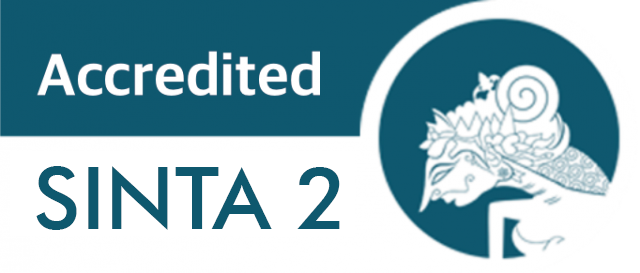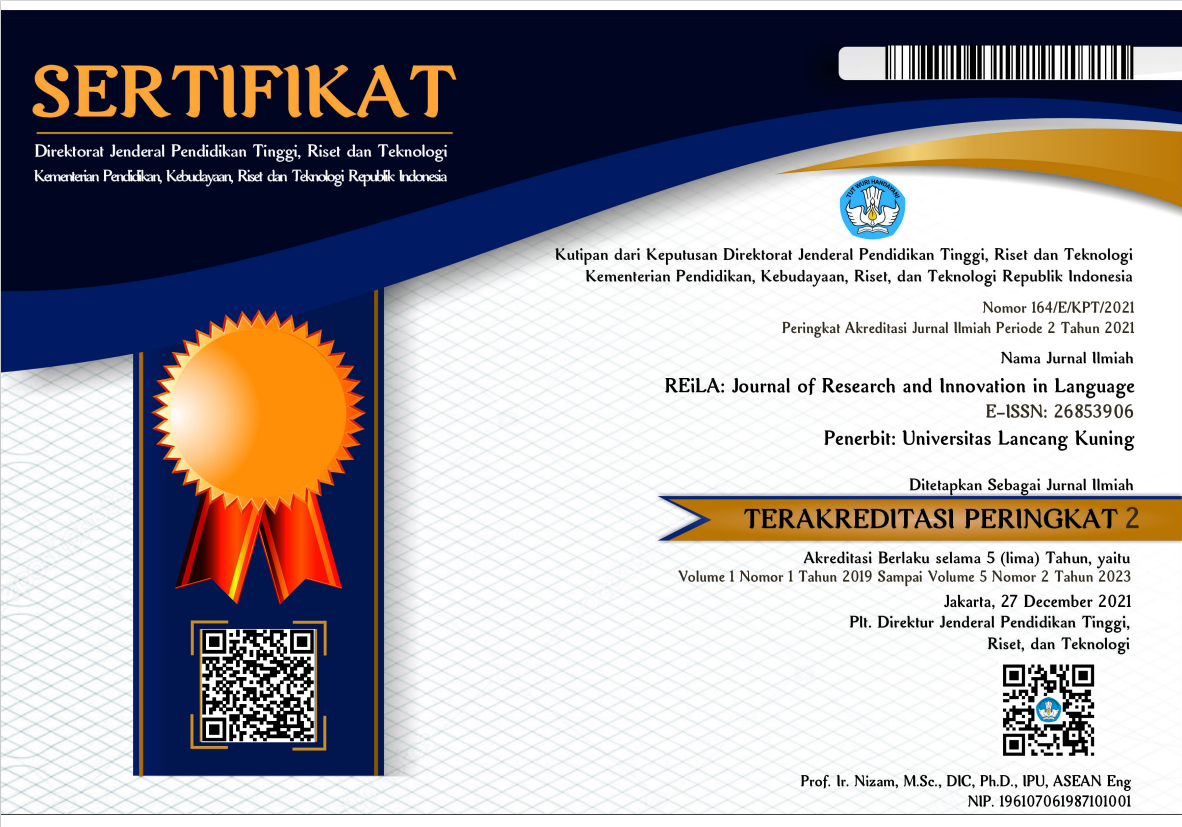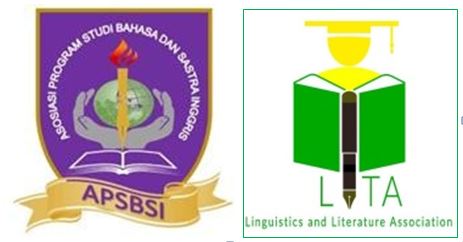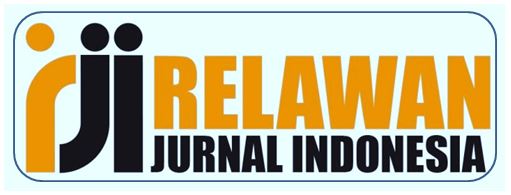Digital Media-based Quantum Learning: Improving Students’ German Writing, Critical Thinking and Learning Motivation
Abstract
The quantum learning model is a combination of various interactions that occur during the learning process. This learning model can be combined with the Assoziogram technique or also with audio-visual media as learning media. This research aims at investigating the implementation of a digital media-based quantum learning model with the Assoziogramm technique/concept map to improve students’ German writing, critical thinking, and learning motivation. This research uses one group pre-test and post-test experimental research design with a total sample of 20 students. The research data were collected using test and non-test (questionnaire) instruments. The research data were analysed using descriptive statistics and paired t-tests. The study results show an increase in the ability to write German, critical thinking, and learning motivation after the implementation of the digital media-based quantum learning model with the Assoziogramm technique. This study contributed to showing how variations in learning are crucial in providing a more engaging learning climate than the conventional learning done by lecturers.
Downloads
References
Abidin, M. Z. (2018). Islamic education based on quantum learning: Conceptual and methodological perspective. Madania: Jurnal Kajian Keislaman, 22(2), 159-172. https://doi.org/10.29300/madania.v22i2.1264
Agustina, D. A. (2018). Pengembangan buku ajar konsep sains berbasis quantum learning. [Development of quantum learning science concept textbook]. Jurnal Pendidikan, 7(2), 77–84.https://doi.org/10.21070/pedagogia.v7i2.1571
Ahmed, S. T. S. (2019). Chat and learn: Effectiveness of using WhatsApp as a pedagogical tool to enhance EFL learners' reading and writing skills. International Journal of English Language and Literature Studies, 8(2), 61–68. https://doi.org/10.18488/journal.23.2019.82.61.68
Ahmed, F. E. Y. 2016. An investigation of writing errors of Saudi EFL University Students (A case study of College of Science & Arts- Tanumah, King Khalid University). International Journal of Social Science and Humanities Research, 4(2), 189-211. https://doi.org/ 10.13140/RG.2.2.22379.18725
Akihary, W., Apituley, P. S., Lestuny, C., & Soumokil, P. (2021). Pelatihan peningkatan keterampilan menulis dengan menggunakan assoziogramm bagi guru Bahasa Jerman. Gaba-Gaba: Jurnal Pengabdian Kepada Masyarakat dalam Bidang Pendidikan Bahasa dan Seni, 1(3), 110-114.
Alidmat, A. O. H., & Ayassrah, M. A. (2017). Development of critical thinking skills through writing tasks: Challenges facing maritime English students at Aqaba College, AlBalqa Applied University, Jordan. International Journal of Higher Education, 6(3), 82–90. https://doi.org/10.5430/ijhe.v6n3p82
Al Kodri, M. N. (2020). The role of digital technology in sustaining online learning during the pandemic Covid19. UHAMKA International Conference on ELT and CAL, 21-31.
Al Naqbi, S. 2011. The use of mind mapping to develop writing skills in UAE schools. Education, Business and Society: Contemporary Middle Eastern Issues, 4(2), 120-133, https://doi.org/10.1108/17537981111143855
Altin, M., & Saracaoğlu, A. S. (2019). The effect of Quantum learning model on foreign language speaking skills, speaking anxiety and self-efficacy of secondary school students. Journal of Language and Linguistic Studies, 15(3), 1083-1104.
Andayani, W., Andriani, R., Amelya, S. R., Octavia, H. I. A., & Debora, M. (2021). Indonesian students' experiences in studying foreign language using technology. Wacana: Jurnal Penelitian Bahasa, Sastra dan Pengajaran, 19(2), 38-45.
Arndt, S., Ceylan, A. Ö., Gülbetekin, E., & Elliott, M. A. (2019). Critical thinking in first (Turkish) and second (German/English) language. FECHNER DAY 2019: 35th Annual Meeting of the International Society for Psychophysics, pp. 63.
Arini, I., Salmanu, S. I. A., & Sangur, K. (2017). The effect of learning model quantum learning to improve the learning outcomes of the cognitive and metacognitive ability of virus concepts in the students of Class XMIA1 State Senior High School 10 Ambon. The 2nd International Seminar on Education Faculty of Teacher Training and Education Science Pattimura University, 49–52.
Astuti, S. R. D., Sari, A. R. P., & Amelia, R. N. (2021). Chem is fun: Animation learning media based on quantum learning on atomic structure. Journal of Educational Chemistry, 3(1), 45-52.
Awada, G. (2016). Effect of WhatsApp on critique writing proficiency and perceptions toward learning. Cogent Education, 3(1), 1–25. https://doi.org/10.1080/2331186X.2016.1264173
Batubara, F., Derin, T., Putri, N. S., & Yudar, R. S. (2020). Five factors influencing the students’ motivation to learn English as a foreign language: A closer look into Montessori classroom environment. REiLA: Journal of Research and Innovation in Language, 2(2), 76-84. https://doi.org/10.31849/reila.v2i2.3165
Chaaban, Y., & Moloney, R. (2016). Educating pre-service teachers in technology use: A Study of provision at Lebanese Universities. International Journal of Education, 8(2), 14–31.
Changwong, K., Sukkamart, A., & Sisan, B. (2018). Critical thinking skill development: Analysis of a new learning management model for Thai high schools. Journal of International Studies, 11(2), 37–48. https://doi.org/10.14254/2071- 8330.2018/11-2/3
Darmanah, D. (2020). Increasing students’ writing skill on poetry through quantum learning strategy: A classroom action research. Journal of English Language Teaching and Cultural Studies, 3(2), 89-96.
Dayu, D. P. K. (2018). Project-based learning model to increase the writing skill toward German language. Proceedings von International Seminar Recent Language, Literature, and Local Cultural Studies, 19(20), 179-183.
DePorter, B., & Hernacki, M. (2011). Quantum learning: membiasakan belajar nyaman dan menyenangkan [Quantum learning: Making learning comfortable and fun]. Kaifa.
Emda, A. (2017). Kedudukan motivasi belajar siswa dalam pembelajaran [Position of student motivation in learning]. Lantanida Journal, 5(2), 172–182.
Erlidawati, E. (2016). Quantum Learning In Learning Reading Comprehension. ITQAN: Jurnal Ilmu-Ilmu Kependidikan, 7(1), 37–50.
Farroq, M. S., Ul-Hasan, M. U., & Wahid, S. (2012). Opinion of second language learners about writing difficulties in English language. A Research Journal of South Asian Studies, 27(1), 183-194.
Firmansjah, F. R. (2017). Stereotype dalam pengajaran Bahasa Jerman. Seminar Nasional Pengajaran Bahasa 2017, 175-188.
Gardner, B., & Korth, S. J. (1997). Classroom strategies that facilitate the transfer of learning to the workplace. Innovative Higher Education, 22, 45–46. https://doi.org/10.1023/A:1025151609364
Gandimathi, A., & Zarei, N. (2018). The impact of critical thinking on learning the English language. Asian Journal of Social Science Research, 1(2), 1-11
Gillet, N., Vallerand, R. J., Lafreniere, & Marc-Andre, K. (2012). Intrinsic and Extrinsic School Motivation as a Function of Age: The Mediating Role of Autonomy Support. Social Psychology Education, 15(1), 77–95. https://doi.org/10.1007/s11218-011-9170-2
Gon, S., & Rawekar, A. (2017). Effectivity of E-learning through WhatsApp as a teaching-learning tool. MVP Journal of Medical Sciences, 4(1), 19–25. https://doi.org/10.18311/mvpjms/0/v0/i0/8454
Gunobgunob-Mirasol, R. (2019). Vocabulary size, reading motivation, reading attitudes and reading comprehension performance among Filipino college learners of English. International Journal of Evaluation and Research in Education, 8(1), 64-70. https://doi.org/10.11591/ijere.v8i1.15335
Hassandraa, M., Goudasa, M., & Chron, S. (2003). Examining factors associated with intrinsic motivation in physical education: A qualitative approach. Psychology of Sport and Exercise, 4(3), 211–223.
Hastutiningsih, A. D., Sugiyono, Suyanto., & Wibowo, U. B. (2021). Digital learning is the new of education face: Practice from many countries. Advances in Social Science, Education and Humanities Research, 640, 148-153
Huda, W., Mardikantoro, H. B., & Haryadi, H. (2018). Quantum Learning Model Influence using Series of Drawings Towards The Fifth Grade Students’ Narrative Writing Skill. Journal of Primary Education, 7(3), 332–341.
Iman, J. (2017). Debate instruction in EFL classroom: Impacts on the critical thinking and speaking skill. International Journal of Instruction, 10(4), 87–108.
Iskandarwassid, & Sunendar, D. (2009). Strategi pembelajaran bahasa [Language learning strategies]. PT Remadja Rosdakarya Offset.
Janzen, K. J., Perry, B., & Edwards, M. (2011). Aligning the quantum perspective of learning to instructional design: Exploring the seven definitive questions. International Review of Research in Open and Distributed Learning, 12(7), 56–73.
Junaedi, I. M. R. S., & Wahyuningsih, F. (2021). Lirik lagu lass uns gehen sebagai media pembelajaran keterampilan membaca Bahasa Jerman SMA. E-Journal Laterne. 10(3), 1-14.
Kao, T., & Oxford, R. L. (2014). Learning language through music: A strategy for building inspiration and motivation. System, 43(1), 114–120. https://doi.org/10.1016/j.system.2014.01.003
Keller, J. M. (2010). Motivational Design for Learning and Performance. Florida State University.
Kusuma, E. D., Gunarhadi, & Riyadi. (2018). The development of problem-based quantum learning model in elementary schoolin. International Journal of Educational Research Review, 3(3), 9–16. https://doi.org/10.24331/ijere.412267
Lai, E. R. (2011). Motivation: A Literature Review. http://www.pearsonassessments.com/research.
Lornsen, T. (2010). Online assignments: Free web 2.0 tools in German Language classes. Die Unterrichtspraxis/Teaching German, 43(2), 194-204. https://doi.org/10.1111/j.1756-1221.2010.00080.x
Lenny, Z., Firman, F., & Desyandri, D. (2018). The effect of using quantum teaching and motivation in learning toward students achievement. Jurnal Aplikasi IPTEK Indonesia, 2(3), 9–15. https://doi.org/10.24036/4.32143
Lin, X., & Lin, C. (2020). Communication Theories applied in mentimeter to improve educational communication and teaching effectiveness. In 4th International Conference on Culture, Education and Economic Development of Modern Society, 870–875. https://doi.org/10.2991/assehr.k.200316.191
Liu, I. F. (2020). The impact of extrinsic motivation, intrinsic motivation, and social self-efficacy on English competition participation intentions of pre-college learners: Differences between high school and vocational students in Taiwan. Learning and Motivation, 72, 101675. https://doi.org/10.1016/j.lmot.2020.101675
MacIntyre, P. D., Schnare, B., & Ross, J. (2018). Self-determination theory and motivation for music. Psychology of Music, 46(5), 699–715. https://doi.org/10.1177/0305735617721637
Mali, Y. C. G. (2015). Motivational factors in the Indonesian EFL writing classroom. Jurnal Pendidikan Bahasa Dan Sastra, 15(1), 1–11.
Marni, S., Aliman, M., Suyono., Roekhan., & Harsiati, T. (2020). Students’ critical thinking skills based on gender and knowledge group. Journal of Turkish Science Education, 17(4), 544-560. https://doi.org/10.36681/tused.2020.44
Martini, N. M., Rasna, I. W., & Artawan, G. (2014). Implementasi model pembelajaran quantum learning dalam pembelajaran menulis karangan deskripsi pada siswa kelas X SMKN 1 Abang [Implementation of the quantum learning model in learning to write descriptive essays in class X SMKN 1 Abang]. Journal Program Pascasarjana Universitas Pendidikan Ganesha, 3(1), 1–8.
Masni, H. (2015). Strategi meningkatkan motivasi belajar mahasiswa [Strategies to increase student motivation]. Jurnal Ilmiah Dikdaya, 5(1), 34–45. https://doi.org/10.33087/dikdaya.v5i1.64
Mishra, P., Singh, U., Pandey, C. M., Mishra, P., & Pandey, G. (2019). Application of student's t-test, analysis of variance, and covariance. Annals of Cardiac Anaesthesia, 22(4), 407-411. https://doi.org/10.4103/aca.ACA_94_19
Muga, W. (2017). Video-assisted quantum learning design to improve psychomotor learning achievement. Journal of Education Technology, 1(1), 30-36.
Murati, R., & Ceka, A. (2017). The use of technology in educational teaching. Journal of Education and Practice, 8(6), 197–199.
Nunggalina, O. C., Muhari, M., & Setyowati, R. R. N. (2018). Quantum teaching-learning model to increase motivation and learning outcomes (Application audio-visual media to increase understanding symbols of Pancasila principles). Atlantis-Press.Com, 125–128. https://doi.org/10.2991/icei-18.2018.27
Ojima, M. (2006). Concept mapping as pre-task planning: A case study of three Japanese ESL writers. System, 34(4), 566–585. https://doi.org/10.1016/j.system.2006.08.003
Oktavia, Y., & Hulu, F. (2017). Pengaruh metode quantum learning berbasis media interaktif terhadap prestasi belajar Bahasa Indonesia Mahasiswa di Universitas Putera Batam. KEMBARA: Jurnal Keilmuan Bahasa, Sastra, Dan Pengajarannya, 3(2), 255–269. https://doi.org/10.22219/kembara.v3i2.5133
Pattiselanno, C. M., Marantika, J. E., & Kunu, G. H. (2022). Influence of the use of WhatsApp social media on the results of learning German of students of SMA Negeri 20 Maluku Tengah. Jurnal Tahuri, 19(1), 47-54.
Paquette, K. R., & Rieg, S. A. (2008). Using music to support the literacy development of young English language learners. Early Childhood Education Journal, 36, 227–232.
Perdamean, A. S. (2019). WhatsApp as a German Language learning media. International Seminar and Annual Meeting BKS-PTN Wilayah Barat, 1(1), 51-56.
Plana, M. G., Opkins, J. E., Plana, M. G., & Appel, C. (2013). Improving learners ’ reading skills through instant short messages : A sample study using WhatsApp Global perspectives on Computer-Assisted Language Learning Improving learners ’ reading skills through instant short messages : A sample study using WhatsApp. IV World CALL Conference, 1013. https://doi.org/10.2307/40130800
Pramonojati, S., Fitriyah, W. D., Carella, D. N., & Sari, I. Y. K. (2019). Students’ critical thinking in writing background of research. Advances in Social Science, Education and Humanities Research, 434, 304–308.
Pravita, A. R., & Kuswandono, P. (2021). Critical thinking implementation in an English education course: Why is it so challenging?. EduLite: Journal of English Education, Literature, and Culture, 6(2), 303-313
Putri, W. F., & Irwan. (2019). Validity of learning devices mathematical based on quantum teaching and learning model for improving critical thinking. IOP Conf. Series: Journal of Physics, 1317(012137). https://doi.org/10.1088/1742-6596/1317/1/012137
Putri, S. E., Hamuddin, B., Nursafira, M. S., & Derin, T. (2020). Discourse analysis in e-learning-based course using moodle platform: An experimental design. REiLA: Journal of Research and Innovation in Language, 2(1), 19-26. https://doi.org/10.31849/reila.v2i1.3960
Ramadhani, M. I., & Ayriza, Y. (2019). The effectiveness of quantum teaching-learning model on improving the critical thinking skills and the social science concept understanding of the elementary school students. Jurnal Prima Edukasia, 7(1), 45–47. https://doi.org/10.21831/jpe.v7i1.11291
Ramkissoon, P., Belle, L. J., & Bhurosy, T. (2020). Perceptions and experiences of students on the use of interactive online learning technologies in Mauritius. International Journal of Evaluation and Research in Education, 9(4), 833–839. https://doi.org/10.11591/ijere.v9i4.20692
Rezaei, S., Derakhshan, A., & Bagherkazemi, M. (2011). Critical thinking in language education. Journal of Language Teaching and Research, 2(4), 1798–4769. https://doi.org/10.4304/jltr.2.4.769-777
Rohayati, D. (2017). Students’ Critical Thinking in Writing An English Exposition Text. Advances in Social Science, Education and Humanities Research, 82, 228–232.
Rosyiidah, F., & Soesetyo, B. H. (2019). Dongeng die sterntaler sebagai pembelajaran keterampilan membaca Bahasa Jerman SMA. Laterne, 8(2), 1-9.
Rudolph, J. (2018). A brief review of Mentimeter – a student response system. Journal of Applied Learning & Teaching, 1(1), 35–37. https://doi.org/10.37074/jalt.2018.1.1.5
Rumapea, G., Syahputra, E., & Surya, E. (2017). Application of quantum learning model to improve student learning outcomes. International Journal of Novel Research in Education and Learning, 4(2), 118–130.
Ryan, R. M., & Deci, E. L. (2020). Intrinsic and extrinsic motivation from a self-determination theory perspective: Definitions, theory, practices, and future directions. Contemporary Educational Psychology, 61, 101860.
Sa’adah, N., & Doyin, M. (2019). Learning Short Story Writing by Quantum Model For Eleventh Graders based on Learning Styles. Seloka: Jurnal Pendidikan Bahasa Dan Sastra Indonesia, 8(3), 1–7.
Sariah, Rasyid, Y., & Herlina. (2018). Improving writing skills of recount text through quantum learning model with concept map technique. Journal of English Language Studies, 3(1), 101–112. https://doi.org/10.30870/jels.v3i1.2822
Schicker, J. (2018). Teaching writing and grammar through critical thinking in a genre‐based upper‐level undergraduate German class. Die Unterrichtspraxis/Teaching German, 51(1), 63-75.
Schoor, C. (2010). Die Bedeutung von Motivation für Wissenserwerbsprozesse beim computerunterstützten kooperativen Lernen. Berlin: Logos.
Setiawati, H., & Corebima, A. D. (2017). Empowering critical thinking skills of the students having different academic ability in biology learning of Senior High School through PQ4R-TPS Strategy. The International Journal of Social Sciences and Humanities Invention, 4(5), 3521–3526.
Shaziya, H., Zaheer, R., & Kavitha, G. (2015). Prediction of students performance in semester exams using a Naïve Bayes classifier. International Journal of Innovative Research in Science, Engineering and Technology, 4(10), 9823-9829. https://doi.org/10.15680/IJIRSET.2015.0410072
Slavin, R. E. (2009). Psikologi pendidikan [Education pshycology]. Indek.
Suana, W. (2018). Students’ Internet Access, Internet Self-Efficacy, And Internet For Learning Physics: Gender And Grade Differences. Journal of Technology and Science Education, 8(4), 281–290. https://doi.org/10.3926/jotse.399
Subekti, H. (2016). Representasi penggunaan media digital dan pembelajaran berbasis penelitian: Sebuah survei untuk mengukur perilaku pada mahasiswa baru di Program Studi Pendidikan Sains Unesa. Jurnal Penelitian Pendidikan IPA, 1(1), 7–12. https://doi.org/10.26740/jppipa.v1n1.p7-12
Sujatmika, S., Hasanah, D., & Hakim, L. L. (2018). Effect of quantum learning model in improving creativity and memory. IOP Conference Series: Journal of Physics Conference, 1006, 1–5.
Sukrillah, A., Ratnamulyani, I. A., & Kusumadinata, A. A. (2017). Pemanfaatan media sosial melalui whatsapp Group Fei sebagai sarana komunikasi [Use of social media through Fei Group’s WhatsApp as a means of communication]. Jurnal Komunikatio, 3(2), 95–104. https://doi.org/10.30997/jk.v3i2.919
Suryani, N. (2013). Improvement of student's history learning competence through quantum learning model at senior high school in Karanganyar Regency, Solo, Central Jawa. Journal of Education and Practice, 4(14), 55–63.
Suwarno, M. (2016). Kombinasi quantum learning dan media motivasi “mathemagic” untuk meningkatkan minat dan hasil belajar matematika siswa. Jurnal Posiding Seminar Nasional Pendidikan Matematika, 2(1), 128-137.
Talpur, N., Kalwar, T., & Talpur, M. J. (2021). Computer-assisted Language Learning in Pakistani Context During COVID-19 Pandemic. REiLA: Journal of Research and Innovation in Language, 3(3), 210-225.
Tjakrawadhana, V. R. K. (2017). German language learning through video to improve student motivation and introduce German culture. English Language and Literature International Conference (ELLiC) Proceedings, 1, 267-272.
Tohidi, H. (2012). The effects of motivation in education. Procedia - Social and Behavioral Sciences, 31, 820–824.
Tokan, M. K., & Imakulata, M. M. (2019). The effect of motivation and learning behaviour on student achievement. South African Journal of Education, 39(1), 1-8.
Turkich, K., Greive, S., & Cozens, P. (2014). Transferring educational theories and knowledge using a co-teaching mentor model: A discipline-appropriate approach. Journal of University Teaching and Learning Practice, 11(3), 1–19.
Utomo, S. W., & Ubaidillah, M. (2018). Pemanfaatan aplikasi whatsapp pada pembelajaran berbasis masalah untuk mata kuliah akuntansi internasional di Universitas PGRI Madiun. Jurnal Teknologi Pendidikan, 6(2), 199–211. https://doi.org/10.31800/jtp.kw.v6n2.p199--211
Wahyudi, R., Neviyarni, N., & Irianto, A. (2019). The effectiveness of information service with quantum learning models using music to improve student learning. Journal of Counseling and Educational Technology, 2(1), 12–18. https://doi.org/10.32698/0311
Wijaya, M. (2012). Pengembangan Model pembelajaran e-learning berbasis web dengan prinsip e-pedagogy dalam meningkatkan hasil belajar. Jurnal Pendidikan Penabur, 19(11), 20–37.
Wijayati, P. H., & Lestari, F. A. (2021). Critical Thinking ability of german literature Department's Students of Universitas Negeri Malang in writing thesis. Journal of Development Research, 5(2), 164-173.
Winch, J. (2019). Does communicative language teaching help develop students’ competence in thinking critically?. Journal of Language and Education, 5(2), 112-122. https://doi.org/10.17323/jle.2019.8486
Windarti, E., Budiwibowo, S., & Rifa’i, M. (2020). The application of quantum learning to improve self–learning motivation and learning outcomes of the 8th Grade Students of State Junior High School 2 Balerejo Madiun. Social Sciences, Humanities and Education Journal, 1(1), 18–25. https://doi.org/10.25273/she.v1i1.5854
Wong, P. M., & Yunus, M. M. (2020). Enhancing writing vocabulary using Mentimeter. International Journal of Learning, Teaching and Educational Research, 19(3), 106–122. https://doi.org/10.26803/ijlter.19.3.7
Zaccone, M. C., & Pedrini, M. (2019). The effects of intrinsic and extrinsic motivation on students learning effectiveness. Exploring the moderating role of gender. International Journal of Educational Management, 33(6), 1381-1394. https://doi.org/10.1108/IJEM-03-2019-0099
Zubaidah, S., Corebima, A. D., & Mistianah. (2015). Asesmen berpikir kritis terintegrasi tes essay. Symbion: Symposium on Biology Education, 200–213.










